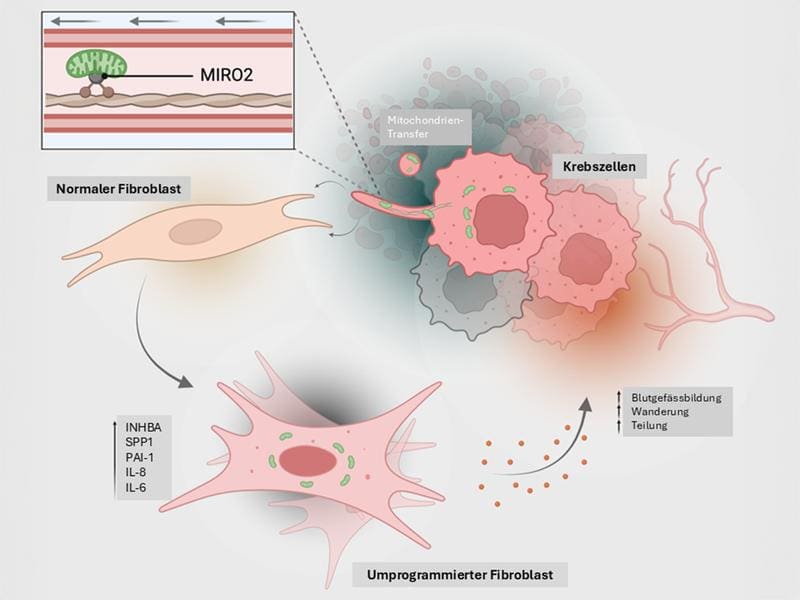ETH researchers discover new cancer mechanism: tumours equip healthy cells with mitochondria
In a study published in the journal Nature Cancer, researchers at ETH Zurich have discovered a novel mechanism by which skin cancer cells promote their growth and survival: they transfer their mitochondria, the cellular energy sources, into neighbouring healthy connective tissue cells, so-called fibroblasts, and functionally reprogram them. The transfer takes place via tiny tube-like connections made of cell membrane material that act like a pneumatic tube line between cancer cells and fibroblasts. Mitochondrial transfer turns the fibroblasts into tumor-associated fibroblasts that multiply faster, produce more energy in the form of ATP, and secrete increased amounts of growth factors and cytokines. This promotes the growth of cancer cells and makes the tumor more aggressive.

In addition, the reprogrammed fibroblasts shape the extracellular matrix, a tissue component that influences mechanical stability and cell communication, in such a way that it provides a favorable environment for cancer cells. The finding was a coincidence, discovered by Michael Cangkrama, a former postdoctoral researcher in the team of cell biology professor Sabine Werner. It was already known that healthy cells pass on their mitochondria to damaged cells in the event of injury, for example after a stroke, in order to ensure their survival. However, cancer cells use this mechanism to form malignant tumors. The study shows that this mitochondrial transfer also plays a role in breast cancer and pancreatic cancer, especially the latter, where there are many fibroblasts and large connective tissue. A key factor for transfer is the protein MIRO2, which is produced in high quantities in cancer cells that transfer their mitochondria. This protein has been detected in cell cultures as well as in human tumor tissue, especially at the invasive tumor boundaries.
By blocking MIRO2 in cell cultures and mouse models, mitochondrial transfer could be prevented, which prevented the fibroblasts from becoming tumor-promoting cells. The researchers are now looking for an inhibitor of MIRO2 that causes minimal side effects in the human body. If such an inhibitor is found, it could be transferred to clinical application in the long term, although the development and testing of a therapy is likely to take years.
Original Paper:
Cangkrama M, Liu H, Wu X, et al. MIRO2-mediated mitochondrial transfer from cancer cells induces cancer-associated fibroblast differentiation. Nature Cancer, August 28, 2025, doi: 10.1038/s43018-025-01038-6
Editor: X-Press Journalistenbû¥ro GbR
Gender Notice. The personal designations used in this text always refer equally to female, male and diverse persons. Double/triple naming and gendered designations are used for better readability. ected.




